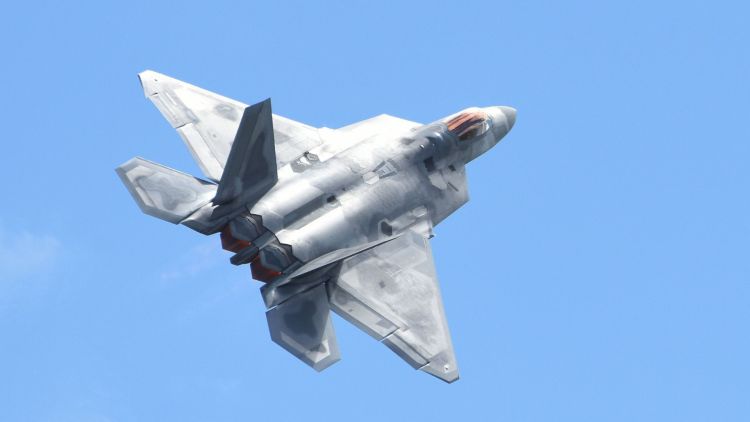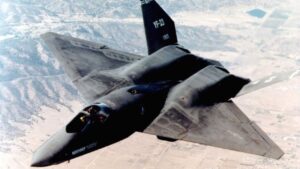Since its introduction in the mid-to-late 2010s, the US Air Force’s Next Generation Air Dominance (NGAD) program has been shaping up to be a cornerstone of America’s future air combat strategy.
But recently, the program made headlines—not for a breakthrough, but for hitting the pause button. Some saw this as a sign of trouble, even fueling rumors that NGAD might be on its way out.
However, according to Lieutenant General David Tabor, US Air Force’s Deputy Chief of Staff for Plans and Programs, those rumors couldn’t be further from the truth.
Speaking at the International Fighter Conference in Berlin on November 5, 2024, Tabor made it clear how the “rumors of NGAD’s demise are ‘grossly exaggerated.’”
So, what’s really going on with this ambitious project?
Quick Recap: What Is NGAD?
The Next Generation Air Dominance, or NGAD, program is more than just developing a new fighter jet to replace the F-22 Raptor, though that is a major component.
As previously discussed, it’s a “family of systems” that includes a sixth-generation fighter and a fleet of autonomous Collaborative Combat Aircraft (CCAs).
Think of it as a hybrid force designed to overwhelm adversaries with sheer mass and cutting-edge tech.
Since its introduction in the mid-to-late 2010s, the US Air Force’s Next Generation Air Dominance (NGAD) program has been shaping up to be a cornerstone of America’s future air combat strategy.
But recently, the program made headlines—not for a breakthrough, but for hitting the pause button. Some saw this as a sign of trouble, even fueling rumors that NGAD might be on its way out.
However, according to Lieutenant General David Tabor, US Air Force’s Deputy Chief of Staff for Plans and Programs, those rumors couldn’t be further from the truth.
Speaking at the International Fighter Conference in Berlin on November 5, 2024, Tabor made it clear how the “rumors of NGAD’s demise are ‘grossly exaggerated.’”
So, what’s really going on with this ambitious project?
Quick Recap: What Is NGAD?
The Next Generation Air Dominance, or NGAD, program is more than just developing a new fighter jet to replace the F-22 Raptor, though that is a major component.
As previously discussed, it’s a “family of systems” that includes a sixth-generation fighter and a fleet of autonomous Collaborative Combat Aircraft (CCAs).
Think of it as a hybrid force designed to overwhelm adversaries with sheer mass and cutting-edge tech.
These uncrewed CCAs are like loyal wingmen, flying alongside human pilots to provide support, gather intelligence, and even engage targets independently.
Why Hit Pause?
Over the summer of 2024, the Air Force announced it was pausing the NGAD program to take a closer look at its requirements.
At first glance, this might seem like a bad sign. But according to Lt. Gen. Tabor, it’s all part of making sure the Air Force gets this right.
“The reality is that the NGAD platform was conceived in about 2018,” Tabor explained. “The environment has changed greatly, and the assumptions have changed greatly.”
In other words, the threats the US faces now—like China’s growing military power—require a different kind of response than what was envisioned six years ago.
Before investing billions of dollars, the Air Force wants to make sure NGAD is tailored to meet these modern challenges.
“It’s imperative for us to reassess what that looks like, what is incorporated on it,” he added.
Progress Continues Behind the Scenes
Even with the pause in contract awards, work on NGAD is far from stalled.
The Air Force has been testing autonomy software for the CCAs under a program called VENOM-AFT (Autonomy Flying Testbed program). Modified F-16s have served as test platforms, with pilots monitoring how these uncrewed systems perform during missions.

The goal? To fine-tune the technology and rapidly expand the Air Force’s understanding of how autonomous aircraft can fit into the NGAD ecosystem.
And it’s not just about the aircraft. NGAD also includes advanced propulsion systems.
General Electric and Pratt & Whitney are developing next-gen engines, known as the XA102 and XA103 prototypes, under the Next Generation Adaptive Propulsion (NGAP) effort.
These engines promise greater efficiency and performance, which are key for maintaining air superiority in contested environments.
Funding the Future
Developing a system as ambitious as NGAD isn’t cheap, and the Biden Administration knows it.
For fiscal year 2025, the administration has requested $2.75 billion for NGAD research and development, along with $557 million for the CCA program, as stated in the Congressional Research Service In Focus report released Monday, November 4.
And that’s just the start—funding is projected to reach $5.72 billion by 2029.
Of course, NGAD isn’t the only big-ticket item on the Air Force’s wishlist.
The service is also working on modernizing the F-35, developing the B-21 Raider bomber, and replacing the aging Minuteman III ICBM with the LGM-35 Sentinel. Balancing all these priorities will be a challenge, but Tabor remains optimistic.
“I’m certainly concerned about appropriate funding for all of this change,” he admitted, “but we have a compelling narrative.”
Why Does the NGAD Program Matter Anyway?
So, why should we care about NGAD? Simply put, it’s about maintaining air superiority in a world where that’s becoming harder to do.
The F-22 Raptor has been a game-changer since it entered service in 2005, but it’s not without its limits. Its range and payload capacity, for example, are less than ideal for countering threats in the vast expanse of the Pacific.
Enter NGAD. This new system aims to fill those gaps, combining the advanced capabilities of a sixth-gen fighter with the versatility and mass of CCAs.
Whether it’s countering China’s increasingly sophisticated air defenses or operating in highly contested environments, NGAD is designed to give America a decisive edge.
The Future of NGAD: Where It’s Headed
While the pause in contract awards might have raised some eyebrows, it’s clear that the Air Force is playing the long game with NGAD. By taking the time to reassess and adapt, they’re ensuring that this program will be as effective and relevant as possible.
The message from Tabor and other Air Force leaders is clear: NGAD is not only alive but evolving to meet the challenges of today and tomorrow. As the program moves forward, it will be fascinating to see how this blend of manned and unmanned systems reshapes the future of air combat.
One thing’s for sure—NGAD is a key piece of the puzzle in maintaining US air dominance for years to come.



